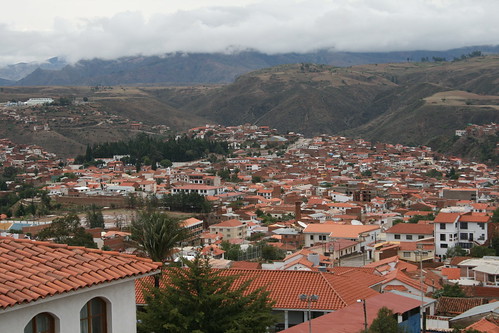By local bus it takes us four hours (instead of 2 1/2) on rough mountain roads to reach Sucre, the constitutional capital of Bolivia. Sucre (also known as La Ciudad Blanca (White City)) is charming and beautiful at first sight, with pretty whitewashed colonial buildings and leafy squares. UNESCO declared the city a world heritage sight in 1992.
There are a number of cultural museums and colonial churches to visit, which is useful when it starts bucketing down with rain as it does for my three days here. There are also plenty of 'activities' to sign up for such as mountain biking, hiking and horse riding etc., although it's easily a place where you can do nothing and just chill out.
According to my guide book one of the main tourist attraction is the Dino Park, so I sheepishly jump on the garrishly painted 'DinoTruck' together with lots of Bolivian children and we head out to a cement quarry 7km out of Sucre. Several years before, the workers had been blowing up rocks and stumbled on to the largest fossilized dinosaur footprint site in the world. The quarry wall is huge. In prehistoric days it was a river bed but was flipped on its side over time. The well-preserved dinosaur tracks, now vertical, walked as far as the eye could see. The river mud has preserved them over the years. This year the quarry was declared a UNESCO protected site so you can only view the footprints using telesecopes from a platform from across the valley. From here there is no sense of scale and could easily be dog or cat prints.

No comments:
Post a Comment